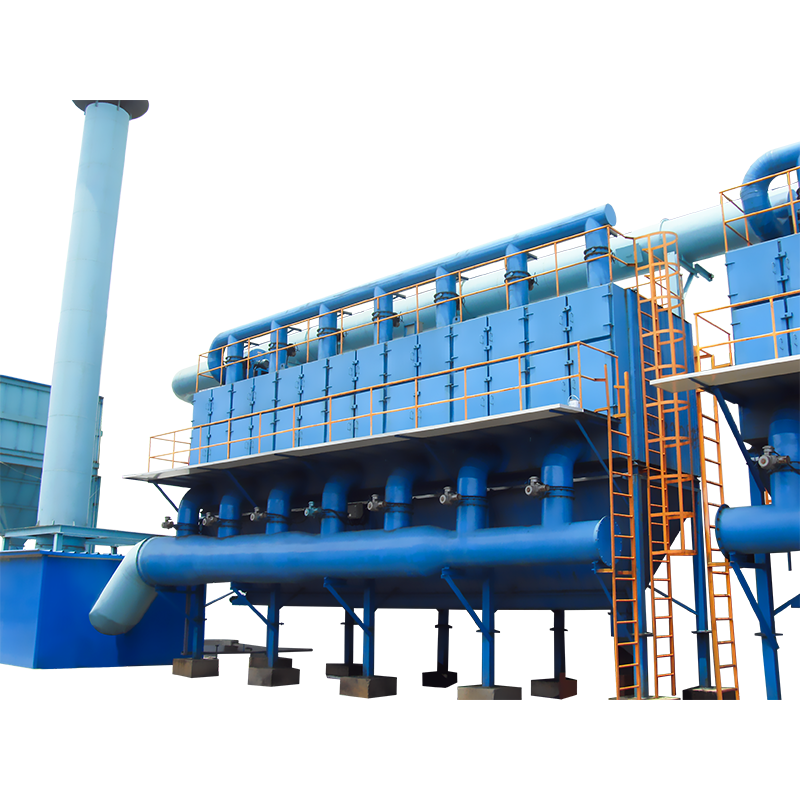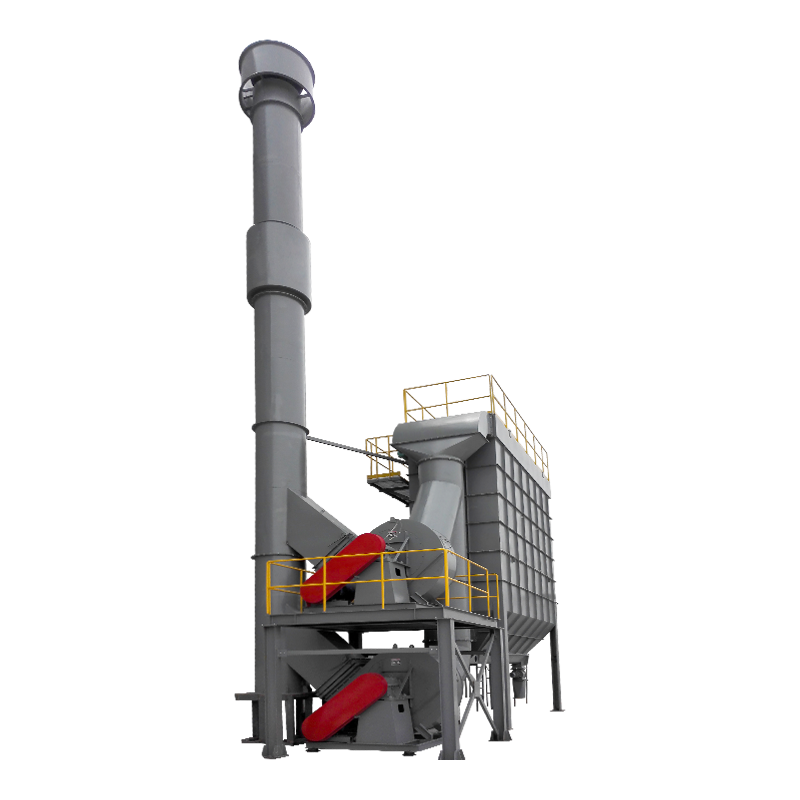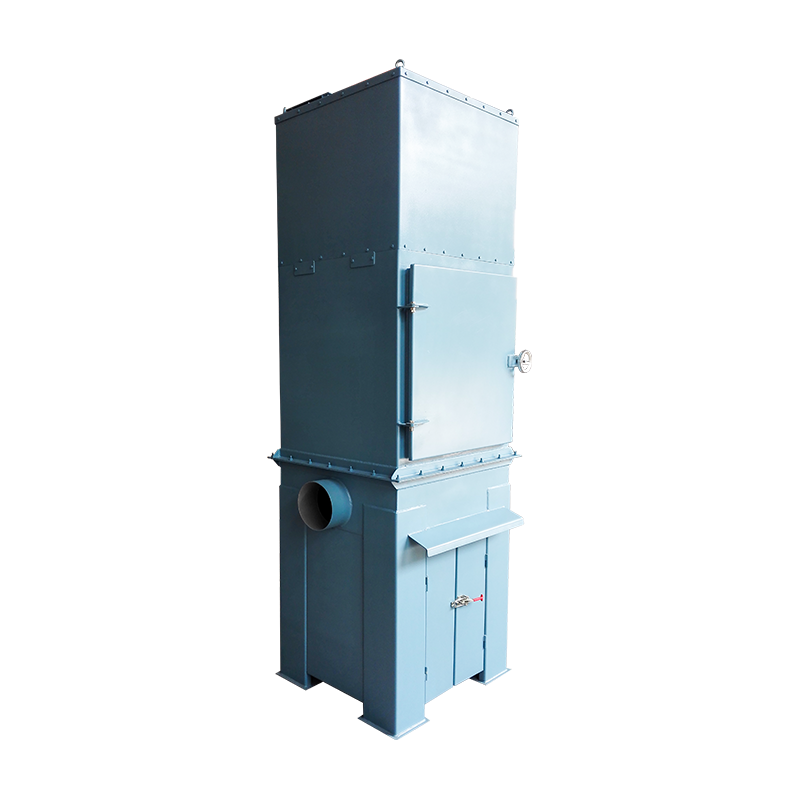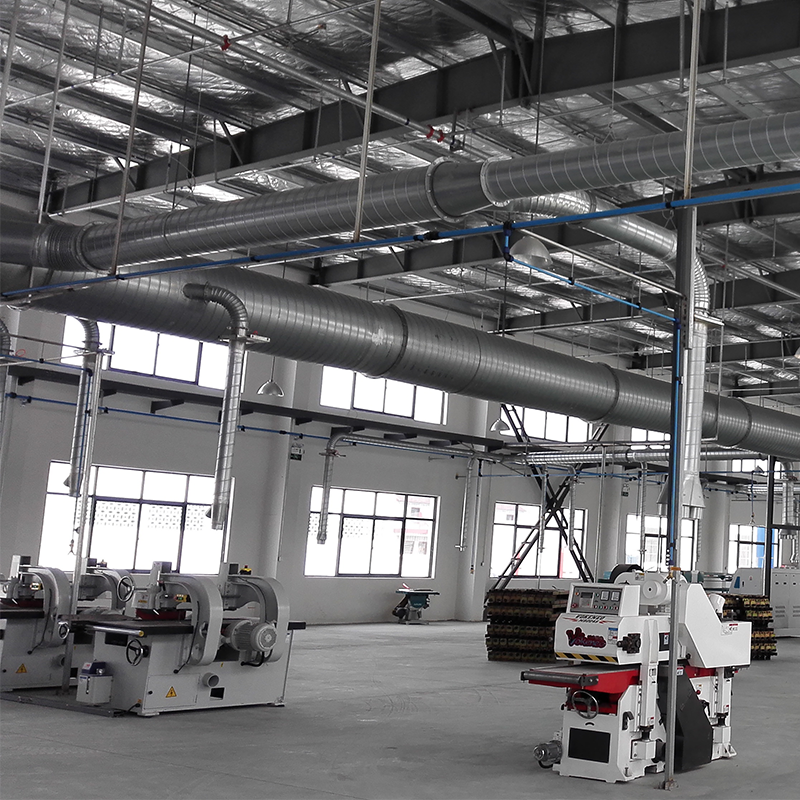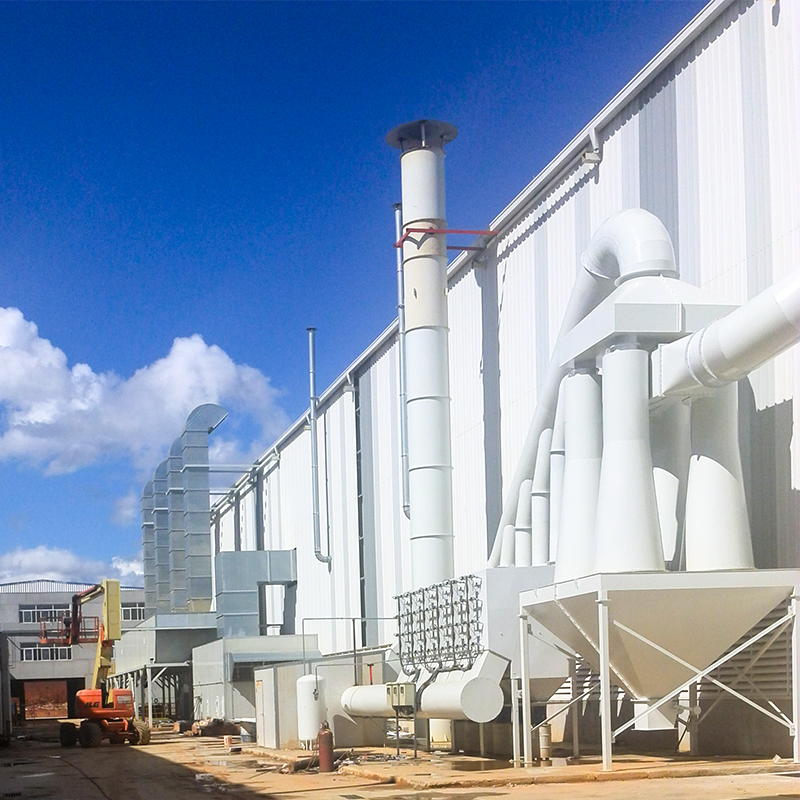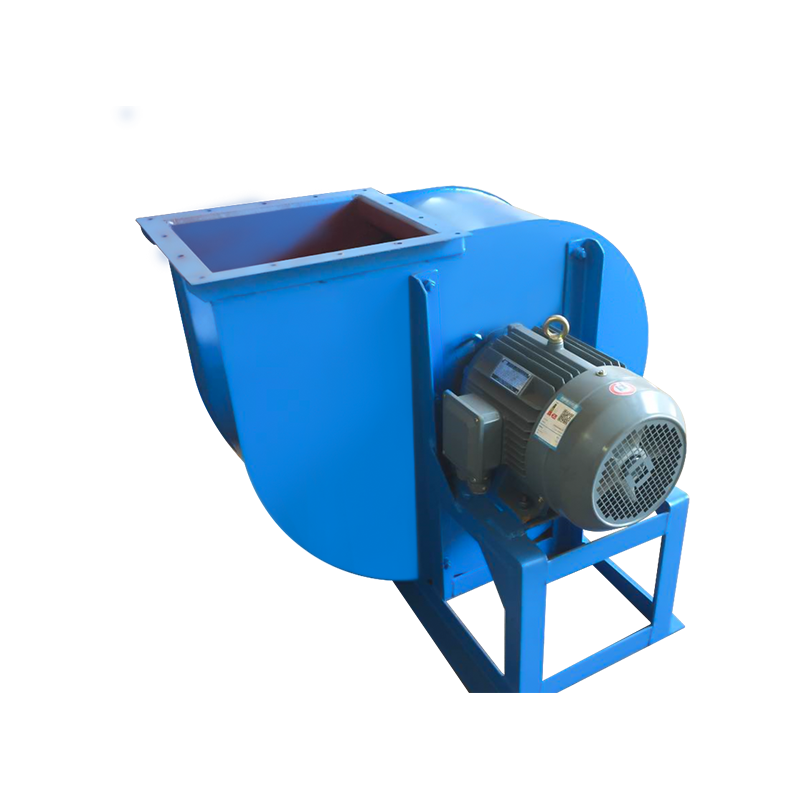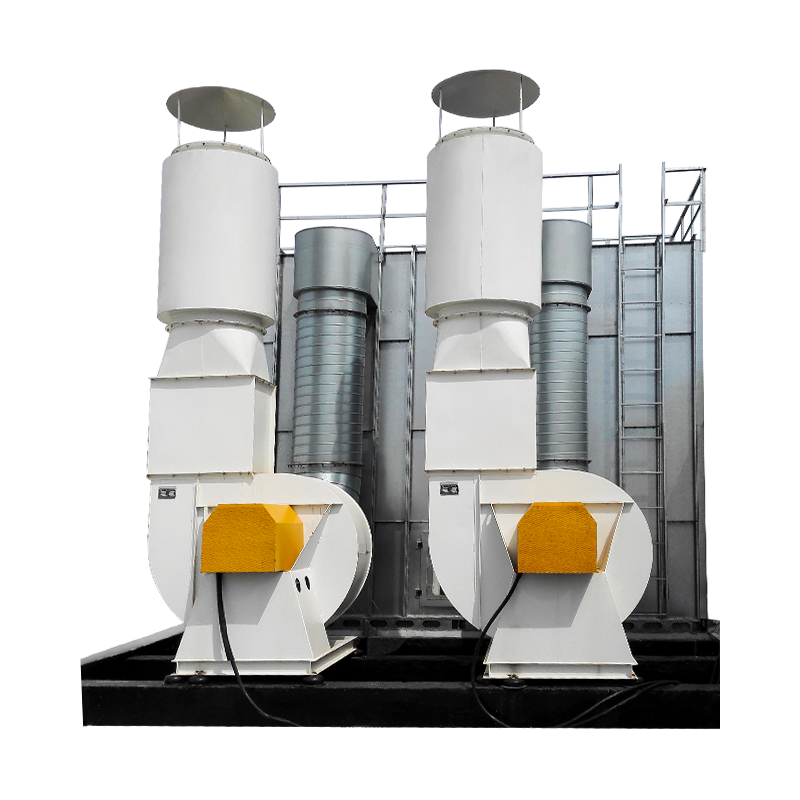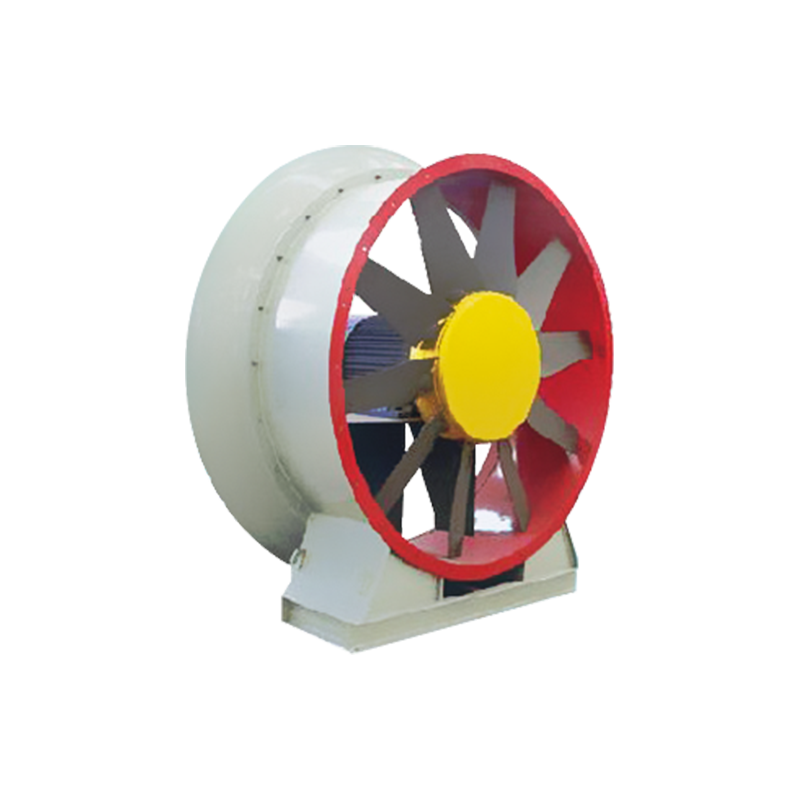In modern industrial production environments, dust control has become a critical component for ensuring production safety, environmental compliance, and improving product quality. Dust is an increasingly serious problem in industries involving large amounts of material grinding, such as metal processing, building materials manufacturing, and ore grinding. Efficient, stable, and sustainable solutions are urgently needed. Baghouse dust collectors for grinding machines are crucial equipment in these situations, significantly improving the working environment and effectively extending equipment life. They are a crucial support for companies pursuing green manufacturing and intelligent transformation.
The Key to Dust Control: Control at the Source
Grinding machines generate large amounts of particulate matter during operation. This dust is often small, fine, and widely distributed, and contains high levels of metallic impurities or ore particles, making it highly abrasive and polluting. If not promptly addressed, it can easily cause erosion and wear on equipment components and pose a serious threat to operator health. Traditional dust removal methods are often inefficient and unstable, failing to meet the dual demands of modern industry for both environmental protection and high efficiency.
As a typical dry dust collection system, the Baghouse dust collector for grinding machines boasts a significant advantage in its exceptional ability to capture fine dust, making it particularly suitable for complex operating conditions with high dust concentrations and small particle sizes. For grinding equipment, baghouse dust collectors are not only an end-of-pipe treatment tool but also a crucial component of the overall dust control system.

Technical Structure and Core Principle: The Technical Guarantee of Filtration Efficiency
The core of the Baghouse dust collector for grinding machines lies in its structural design and filtration principle. Its basic structure comprises an air intake system, a filter chamber, a clean air chamber, a filter bag assembly, a pulse jet cleaning system, and a dust discharge device. After dust enters the air intake with the airflow, larger particles settle directly due to gravity, while fine dust is trapped on the filter media surface as it passes through the filter bag. Efficient capture is achieved through a combination of physical interception, inertial collision, diffusion, and electrostatic adsorption.
In a baghouse dust collection system, the choice of filter bag material is crucial. Current high-performance equipment commonly uses polyester needle-punched felt, coated filter media, or antistatic composite materials. These filter media not only improve filtration accuracy but also possess excellent mechanical strength, chemical stability, and strong adaptability. To ensure long-term operational stability, the system is equipped with an automated pulse jet cleaning function to regularly remove dust from the filter bag surface, preventing increased resistance and impacting airflow.
Precise Matching: Improving Overall Grinding System Efficiency
Bag dust collectors are not universal devices and should be customized based on multiple factors, such as grinder type, processed materials, dust properties, and production cycle. Insufficient dust collector capacity or improper matching can directly lead to reduced equipment efficiency and even frequent downtime for cleaning, severely impacting production flow.
To meet the needs of diverse production scenarios, modern bag dust collection systems are increasingly becoming modular and intelligent in design. These systems not only support parallel dust collection for multiple grinding machines but can also be automated through a PLC program control system, enabling real-time monitoring and remote management of dust removal performance. Some high-end equipment also integrates multiple functions, such as temperature and humidity sensors, explosion-proof devices, and energy optimization systems, making dust collection systems more intelligent, environmentally friendly, and safe.
Core Environmental Protection Equipment in the Green Manufacturing Transformation
With the continued advancement of the "Dual Carbon" goals, green manufacturing has become a major theme in industrial development. Environmental protection authorities are increasingly stringently regulating industrial dust emissions, and emission standards are continuously being raised. In this context, baghouse dust collectors are more than just "auxiliary equipment" for factory production; they also reflect a company's environmental protection capabilities, social responsibility, and brand image.

Using high-efficiency baghouse dust collection equipment can significantly reduce dust emissions, improve workshop air quality, and prevent dust from affecting sensitive electronic instruments, testing equipment, and finished product quality. Furthermore, effective dust control helps extend the service life of grinding equipment components, such as bearings and cutter heads, and reduces wear and tear caused by dust accumulation, resulting in significant maintenance cost savings for businesses.
Baghouse dust collectors for grinding machines are playing an increasingly important role in industrial dust control. They not only impact production efficiency and equipment stability, but also directly impact operational safety, the workshop environment, and even the company's environmental image. With the continuous evolution of technology and the continued pressure of environmental protection policies, bag dust collection equipment is developing in a smarter, greener, and more systematic direction. For any company that values sustainable development and green manufacturing, choosing an efficient and professional bag dust collection system is no longer an option but a necessity to promote the transformation of future production methods.

 English
English Español
Español عربى
عربى
